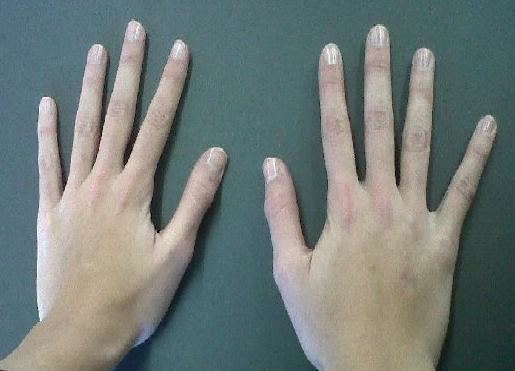Specialty medical genetics ICD-9-CM 759.82 MedlinePlus 003288 | ICD-10 Q87.4 (ILDS Q87.410) DiseasesDB 15196 MeSH D008382 | |
 | ||
Arachnodactyly ("spider fingers") or achromachia is a condition in which the fingers and toes are abnormally long and slender, in comparison to the palm of the hand and arch of the foot. Also, the individual's thumbs tend to also be pulled inwards towards the palm. It can be present at birth or develop in later life.
Contents
Causes
This feature can occur on its own, with no underlying health problems. However, it can also be associated with certain medical conditions. Examples include Marfan syndrome, Ehlers-Danlos syndrome, Loeys–Dietz syndrome, Congenital contractural arachnodactyly, and homocystinuria.
Arachnodactyly has been linked to mutations in both fibrillin-1 and fibrillin-2 genes.
Notable cases
It remains unconfirmed whether composer Sergei Rachmaninoff's abnormally large reach on a piano was a result of arachnodactyly due to Marfan syndrome, as the pianist exhibited no other signs of the disease.
